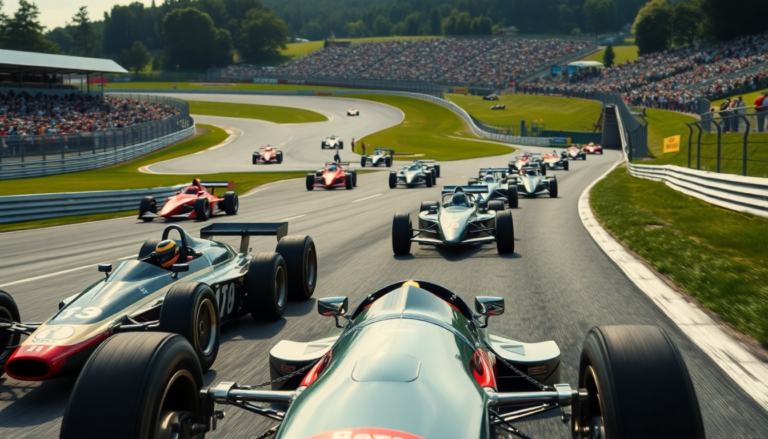Argomenti trattati
The Rise of Formula One Racing
Formula One, often referred to as F1, stands as the pinnacle of motorsport, captivating fans worldwide since its inception in 1950. Sanctioned by the Fédération Internationale de l’Automobile (FIA), this high-octane sport features open-wheel, single-seater cars that race in a series of events known as Grands Prix. These races take place on some of the world’s most iconic circuits, showcasing the incredible skill of drivers and the cutting-edge technology of their machines.
The term ‘formula’ in Formula One refers to the regulations all participating cars must adhere to, ensuring a level playing field. Each season consists of a series of races across various countries and continents, each contributing to the World Championship standings for drivers and constructors alike. The competition is fierce, with drivers vying for points earned during each race, ultimately leading to the prestigious title of World Champion.
Technological Innovations in Formula One
Over the decades, Formula One has been a hotbed of technological advancement. The cars are engineered to be the fastest regulated racing machines globally, achieved through a combination of aerodynamics, powerful engines, and advanced materials. Aerodynamic downforce plays a crucial role, allowing cars to corner at high speeds, primarily generated by the front and rear wings as well as underbody tunnels.
The introduction of electronics transformed the racing experience, with systems like traction control and automatic shifting enhancing driver performance. However, these aids faced bans in the 1990s due to concerns that they diminished driver skill. The sport has continuously evolved, embracing innovations while balancing safety and performance.
The Financial Landscape of Formula One
The financial dynamics of Formula One are as complex as the races themselves. Running a competitive team in this elite sport entails substantial costs, estimated at around £220 million annually. This encompasses car design, manufacturing, maintenance, driver salaries, and logistics. The financial stakes are high, often leading to intense political battles within the sport.
Since 2017, the sport’s commercial rights have been under the ownership of Liberty Media, which has aimed to enhance the sport’s global appeal and revenue streams. The introduction of a cost cap in recent seasons seeks to level the playing field, preventing wealthier teams from monopolizing success and encouraging innovation among all competitors.
Historical Milestones in Formula One
The history of Formula One is marked by significant milestones, beginning with the inaugural race at the 1950 British Grand Prix, where Giuseppe Farina claimed the first Drivers’ Championship title. The sport quickly evolved, with legendary drivers like Juan Manuel Fangio and Michael Schumacher setting records that still resonate today. Schumacher’s seven championships remain a benchmark, tied with Lewis Hamilton, who has since surpassed many of his records, including most career wins.
Throughout the years, the introduction of the Constructors’ Championship in 1958 further intensified competition, with teams like Ferrari, McLaren, and Mercedes-Benz dominating various eras. The technological arms race led to groundbreaking designs and innovations that continually redefine the sport.
Safety and Regulation Changes
Safety in Formula One has seen a continuous evolution, particularly after tragic incidents in the past. The deaths of Ayrton Senna and Roland Ratzenberger in 1994 prompted significant changes in safety regulations, highlighting the need for enhanced driver protection and track safety measures. The FIA has implemented numerous rules aimed at minimizing risks, including improved car designs, better track layouts, and mandatory safety equipment for drivers.
In 2020, the COVID-19 pandemic forced the sport to adapt, leading to logistical challenges and the postponement of races. The implementation of strict health protocols ensured the safety of teams and personnel while maintaining the sport’s integrity and excitement for fans.
The Future of Formula One
Looking ahead, Formula One is poised for an exciting future, with new regulations aimed at promoting competition and sustainability. The introduction of hybrid engines and a commitment to carbon neutrality by 2030 reflect the sport’s dedication to innovation and environmental responsibility. As new teams and technologies enter the scene, the landscape of Formula One will continue to evolve, captivating fans and inspiring future generations of motorsport enthusiasts.

